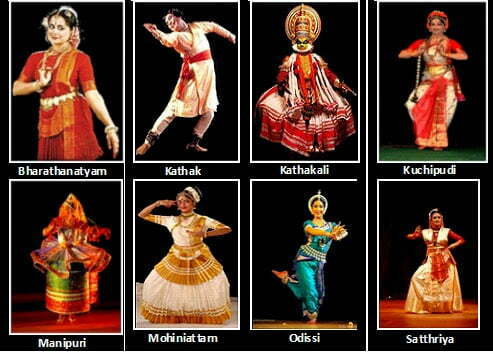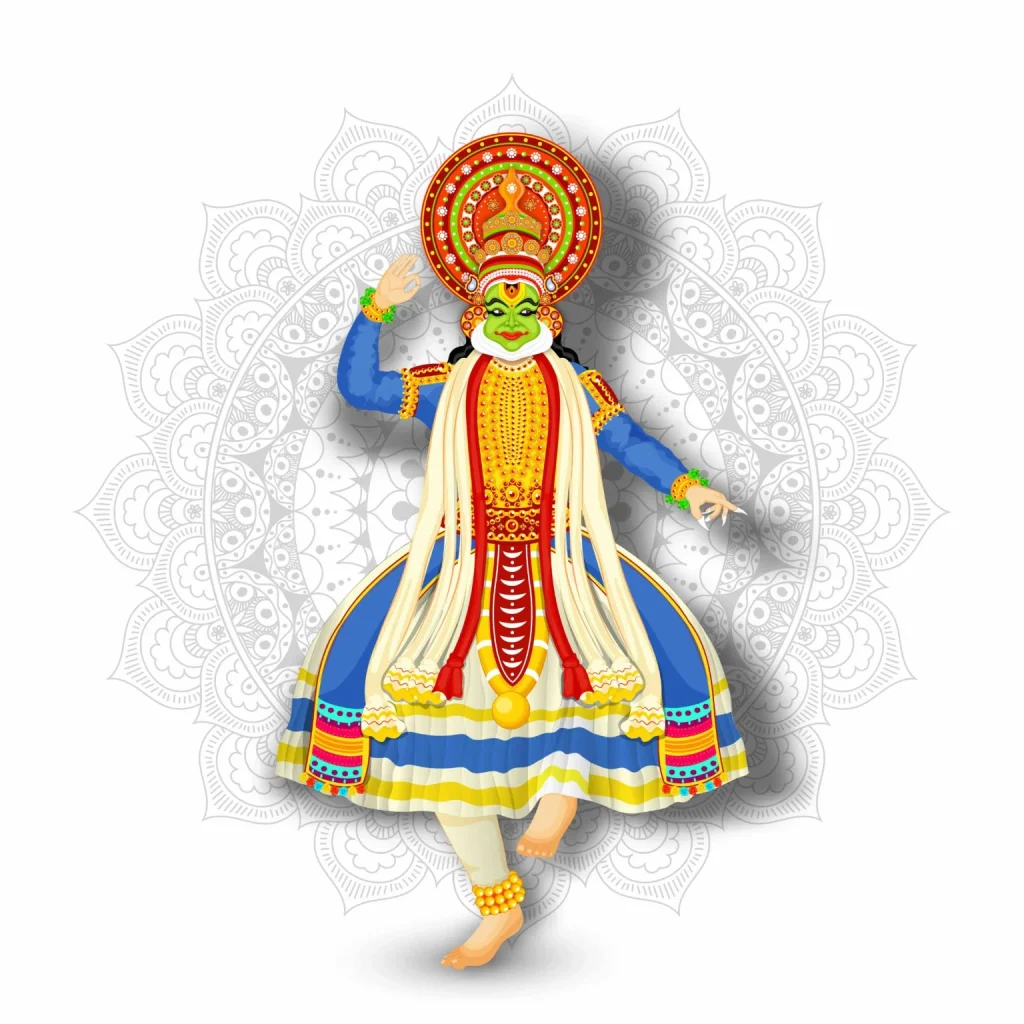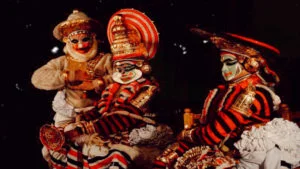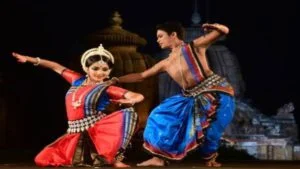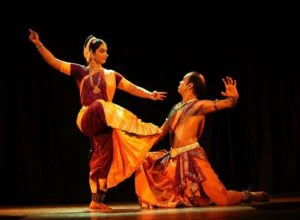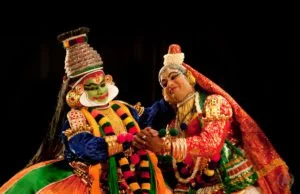Kerala is the home of several dance forms, and here is where you can see the vibrant characters of Kathakali. This dance form is of a comparatively recent origin, and in addition to that, the roots are unclear. The perfectly developed style of Kathakalī originated somewhere around the 17th century. However, it is an art that has evolved from many social and religious theatrical forms. Which had existed in the southern region in ancient times. Chakiarkoothu, Koodiyattam, Krishnattam, and Ramanattam are a few of the ritual performing arts of Kerala which have had a direct influence on Kathakali in its form and technique.
Kathakalī is also different in its structure and details of the art form developed in the courts and theatres of Hindu principalities, unlike other classical Indian dances which primarily developed in Hindu temples and monastic schools. Also, The dance symbolizes the eternal fight between good and evil.
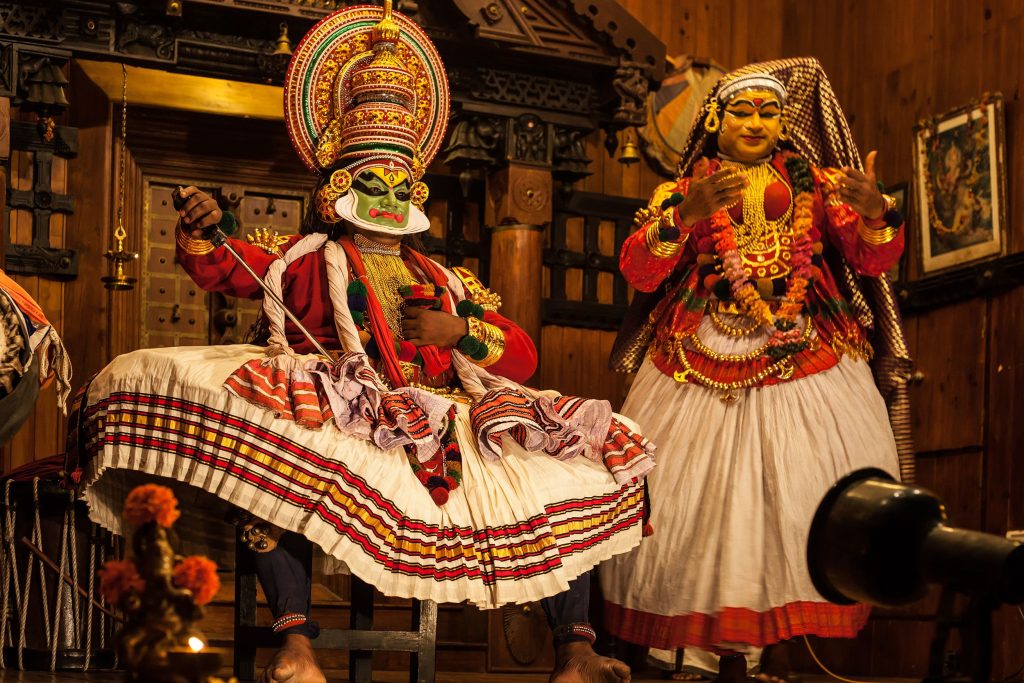
Of all classical Indian dances, Kathakali is the most elaborate one. The costuming consisted of headdresses, face masks and vividly painted faces. It takes several evening hours for a Kathakali troupe to get ready for a play. However, The costumes are what has made Kathakali’s popularity extend beyond adults. Importantly, Children too get absorbed by the colours, makeup, light and sound of the performance.
History of Kathakali
A Legend says that the Raja of Kottarakkara had composed the Ramanattam in an enraged state when the Zamorin of Calicut had refused to send his Krishnattam troupe to Travancore. Also, Kathakali is a blend of dance, music, acting, and dramatized stories. Adapted mostly from the Indian epics, like Ramayana, Mahabharata, and others. the dancer expresses himself with codified hasta mudras (hand gestures) and facial expressions. For body movements and choreography, Kathakali is also indebted to the early martial arts of Kerala. We at Podium School encourage children to follow different art forms.
The characters
Kathakali is a chiefly interpretative dance form, where the characters become the dominant and important part of traditional Kerala dance forms. We see three types of characters in Kathakali, Satvika, Rajasika, and Tamasika. In a Kathakali performance. Satvika characters are noble, heroic, generous and refined, and are therefore grouped under certain clearly defined types like the pacha, kathi, thadi, kari or minukku.
Kathakali is the only dance style using the entire body. The technical details include all the parts i.e. from facial muscles to fingers, eyes, hands, and much more . The movement of the eyebrows, the eyeballs and the lower eyelids as described in the Natya Shastra are used to the very maximum in Kathakali. And the weight of the body is kept on the outer edges of the feet, which are slightly bent and curved, and give the performer a wonderful posture to hold.
Pacha
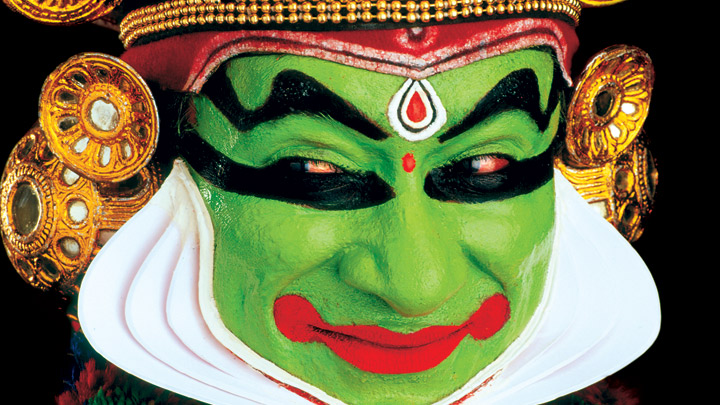
Pacha is a character type that belongs to the pious, gentle, and noble characters in the stories taken up for performance in Kathakali. In Pacha, the color green dominates, and the performers all wear headgear. Therefore, Krishna and Rama wear special crowns decorated with peacock feathers. This also makes noble characters like Indra, Arjun, and the Devas some of the Pacha characters. Pacha depicts the vibrant characters in Kathakali to the very peak.
Kathi
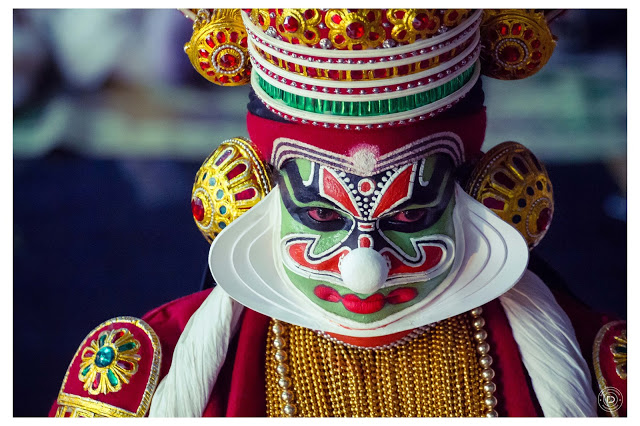
Kathi depicts the anti-heroes in the story. It literally means knife and is donned by valorous characters having good or evil traits. They are sometimes great warriors and scholars such as Ravana, Kamsa, Narakasura, Duryodhana, Keechaka, and Sisupala to name a few. The mustache and the small knob called chuttippu fixed on “the tip of the nose and another in the center of the forehead, is peculiar to the Kathi characters.
Thadi
The characters of the thadi (beard) category are the chuvanna thadi, (red beard), vella thadi (white beard) and the karutha thadi (black beard). Vellathadi is the white-bearded character. Likewise, It is generally that of Hanuman, the dancer also dons the costume of a monkey.
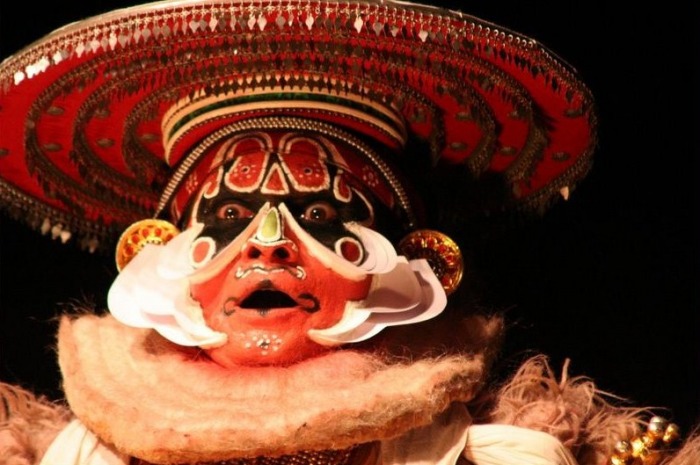
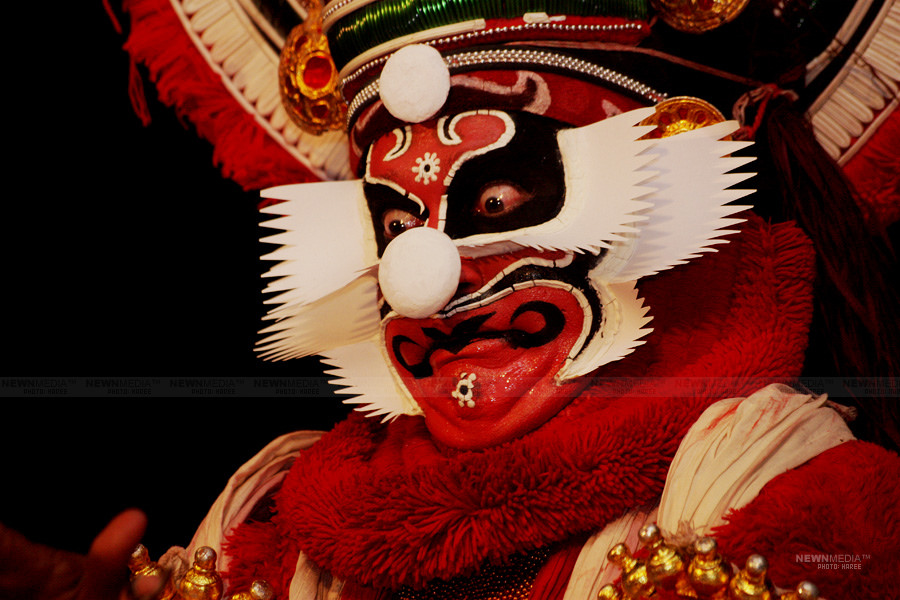

Kari
Cruel characters don Kari and it literally means black They are the characters whose make-up have a black base; they wear black costume depicting a hunter or forest dweller. Characters in Kari are further classified into two according to gender; Aankari (male) and Penkari (female). And the Kaattalan (forest dweller) in Nalacharita is an example of the Aankari character.
Minukku
Minukku are the minor characters in the story, which are the women and sages. Kathakali’s costumes and make-up are elaborate and designed so as to give a superhuman effect. The make-up of Kathakali can be classified into the teppu, chuttikuthu and uduthukettu. The actor himself does the teppu. Each character has a distinct teppu. However, the experts who specialize in make-up are the ones who do the second stage. Uduthukettu is the wearing of huge billowing skirts.

The Music
Music is central to a Kathakali performance, setting the mood and triggering emotions resonant with the nature of the scene. Kathakali Music is central to a Kathakali performance. Likewise, it is used in Kathakali to set the mood and trigger emotions which are resonant with the nature of the scene. It sets the mood for the Vibrant characters in Kathakali. The music follows the traditional Sopana sangeet of Kerala. In present times, Kathakali music also uses Carnatic ragas-the raga and tala conforming to the bhava, rasa, and dance patterns (nritta and natya).
Chenda, Maddalam, Chengila, Ilathalam, Idakka, and Shankhu are what comprise the orchestra in other traditional performing arts of Kerala. Some major musical patterns, that go with the moods and content of the scene are: Chempada (most common and default that applies to a range of moods, in battles and fights between good and evil, also to conclude a scene), Adantha (scenes involving kings or divine beings), Muri Adantha musical style (for comic, light-hearted, or fast-moving scenes involving heroic or anger-driven activity).

The Acting
Ilakiattam is the part of the performance when the characters get an opportunity to demonstrate their excellence in abhinaya (Acting). However, for most part of the act or performance, the dancers engage themselves in chodiattam, which means to act in strict conformity to the words in the padams sung by the musicians. There are 24 main mudras, and numerous more minor ones in Kathakali. The Navrasa are nice facial characters, which each actor masters through facial muscle control during his education, in order to express the emotional state of the character in the play.
The classical Sanskrit texts provide the theory behind Navarasas, such as Natya Shastra. But they are sometimes found with different names, which happens in cases of classical Indian dances as well. The Navarasa express nine Bhava (emotions) in Kathakali and give the vibrant characters of Kathakali the edge they require.
Final words
Kathakalī is still practiced in its traditional ways. However, there are experimental plays based on European classics and Shakespeare’s plays in recent times as well. Recent productions have adapted stories from other cultures and mythologies, such as those of Miguel de Cervantes, Johann Wolfgang von Goethe, and William Shakespeare. Thanks to the service done by the poet Vallathol, this classical dance form has received a new impetus. Therefore, Kathakali, due to its vibrant costumes and impressionable themes has gained a cult following among the fans of classical dances.
To know more facts about Kathakali, do check out our article update on facts about Kathakali, here!
Share with your friends

